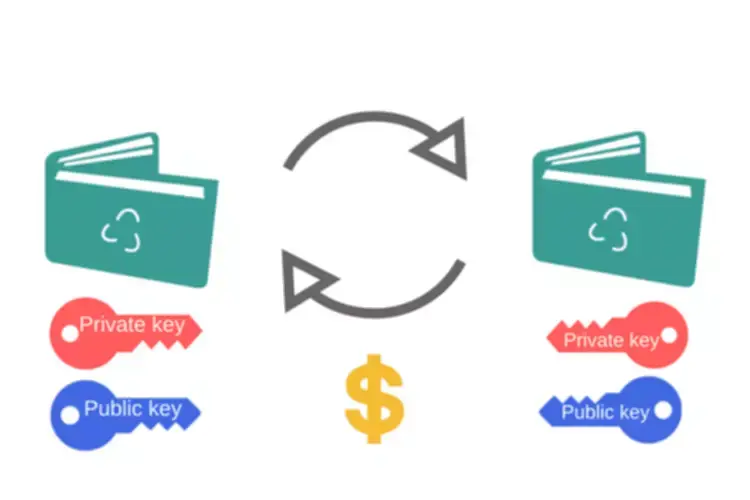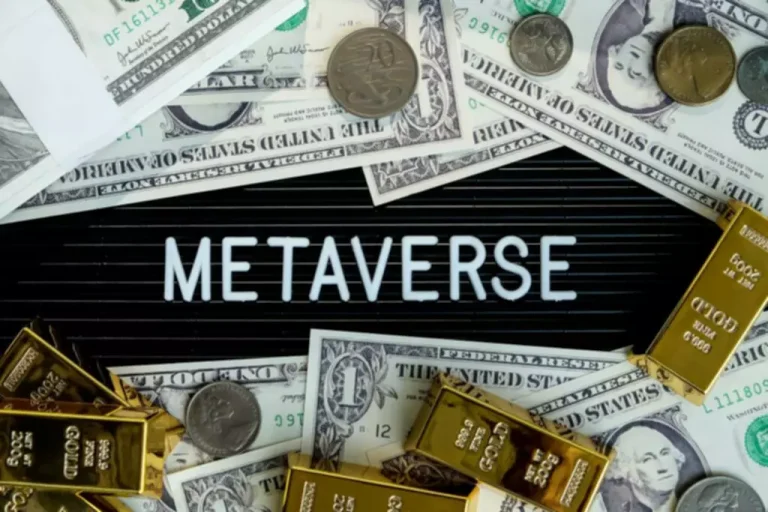Here’s why passive investing trumps lively investing, and one hidden factor that retains passive investors profitable. For most individuals, there’s a time and a spot for lively and passive investing over a lifetime of saving for major milestones like retirement. More advisors wind up combining the two strategies—despite the grief each side gives the other over their strategy. Only a small proportion of actively managed mutual funds do better than passive index funds.
Passively managed index funds face performance constraints as they are designed to supply returns that carefully monitor their benchmark index, rather than search outperformance. They not often beat the return on the index, and often return barely much less because of working prices. More specifically, passive buyers tend to adhere to a lot safer “set it and overlook it” approaches to investing. Identifying essentially strong, long-term plays, passive buyers will maintain their investments through any kind of short-term shift available within the market. By removing the timing element and impulse of energetic investing, it is a technique that retail traders are sensible to utilize so as to reduce the danger to their cash. In contrast, passive investing is all about taking a long-term buy-and-hold strategy, sometimes by shopping for an index fund.
But, in 2019, investors withdrew a net $204.1 billion from actively managed U.S. inventory funds, while their passively managed counterparts had web inflows of $162.7 billion, based on Morningstar. However, not all mutual funds are actively traded, and the most affordable use passive investing. These funds are cost-competitive with ETFs, if not cheaper in quite a number of circumstances. In fact, Fidelity Investments offers four mutual funds that cost you zero management fees. Many funding advisors consider the most effective strategy is a blend of active and passive types, which can help reduce the wild swings in inventory prices throughout unstable periods.
Especially where funds are involved, this leads to fewer transactions and drastically decrease fees. That’s why it’s a favourite of financial advisors for retirement savings and different investment targets. While some passive traders like to pick funds themselves, many choose automated robo-advisors to construct and handle their portfolios. These online advisors usually use low-cost ETFs to maintain bills down, and they make investing as straightforward as transferring cash to your robo-advisor account.
Is Passive Or Energetic Better?
Passive vs. lively administration doesn’t should be an either/or selection for advisors. Combining the 2 can additional diversify a portfolio and really assist manage total threat. Clients who have massive cash positions might need to actively search for opportunities to put cash into ETFs simply after the market has pulled again. Passive investing has execs and cons when contrasted with lively investing. This strategy can be include fewer charges and increased tax efficiency, however it might be limited and result in smaller short-term returns compared to active investing.

Passive managers merely search to own all the shares in a given market index, within the proportion they are held in that index. Examine aggregated performance for all equity and glued earnings classes within the global Morningstar mutual fund database. Compare the performance of lively funds versus passive funds inside each class, together with returns both equally-weighted and asset-weighted, before-fees (gross) and after charges (net), and for institutional versus retail funds. While the results vary throughout categories, the typical finding is that energetic funds outperform passive funds in mixture in gross terms, however are nearer to line ball in net phrases. A key summary chart from their paper is copied below, though keep in mind this aggregates throughout fund categories. In this chart, solely the combination results for retail fixed-income accord with what might be expected underneath Sharpe’s proposition.
Why Recommendation Matters
Either way, you will pay extra for an energetic fund than for a passive fund. Active investments are funds run by funding managers who attempt to outperform an index over time, such because the S&P 500 or the Russell 2000. Passive investments are funds supposed to match, not beat, the efficiency of an index.

Filter by funding want, ZIP code or view all Financial Advisors. Many or all the products featured listed here are from our companions who compensate us. This influences which merchandise what are the pros and cons of active investing we write about and where and the way the product seems on a page. The first passive index fund was Vanguard’s 500 Index Fund, launched by index fund pioneer John Bogle in 1976.
Active investing is still well-liked among advanced merchants in search of huge returns on bigger, riskier investments. Your portfolio supervisor might know one of the best methodology of executing trades to find extra alternatives for tax loss harvesting and cut back your tax liability. Tax-loss harvesting is whenever you promote securities, like stocks or ETFs, at a loss to offset capital features elsewhere in your investment portfolio.
Choice Strategies
Active investing means investing in funds whose portfolio managers choose investments primarily based on an independent evaluation of their worth—essentially, making an attempt to determine on the most engaging investments. Generally speaking, the aim of lively managers is to “beat the market,” or outperform sure commonplace benchmarks. For example, if you’re an active US fairness investor, your aim could additionally be to attain higher returns than the S&P 500 or Russell 3000. Index funds monitor the complete market, so when the overall inventory market or bond prices fall, so do index funds. Index fund managers often are prohibited from utilizing defensive measures corresponding to lowering a position in shares, even if the manager thinks share prices will decline.
The introduction of index funds in the Seventies made achieving returns in line with the market a lot simpler. In the Nineties, exchange-traded funds, or ETFs, that monitor major indices, such because the SPDR S&P 500 ETF (SPY), simplified the method even additional by permitting buyers to trade index funds as if they have been shares. Someone – either a money supervisor otherwise you, is watching the market and changing the portfolio based mostly on what they believe will convey the greatest potential returns given market conditions. Active investors normally do lots of analysis, taking into consideration how market trends, the financial system, and politics may impression one of the best time to purchase or sell. While this may appear simple, even advanced portfolio managers battle to out-perform the markets constantly over long durations.
Thus energetic investors also get the gross market return in the aggregate, with anyone lively investor’s acquire being another lively investor’s loss. This also means lively buyers should, due to this fact, do worse than passive buyers in internet returns as they are incurring larger prices in terms of fees and buying and selling. Active investing is thus a zero-sum game in gross phrases and a negative-sum recreation in internet phrases. French acknowledges that energetic investment might provide a social benefit by making the market more environment friendly.

The wager was accepted by Ted Seides of Protégé Partners, a so-called “fund of funds” (i.e. a basket of hedge funds). Each approach has its own deserves and inherent drawbacks that an investor should think about. Thus, downturns in the economic system and/or fluctuations are viewed as temporary and a necessary facet of the markets (or a possible opportunity to decrease the acquisition worth – i.e. “dollar cost averaging”). One exception, nonetheless, is tax-loss harvesting because it aims to lower your tax invoice by offsetting capital features with capital losses. You also will not experience almost as many taxable events that would value you down the road.
Active funds are better for knowledgeable, hands-on traders who have market knowledge and don’t thoughts the excessive threat. Unlike robo-advisors, which mainly utilize the buy-and-hold philosophy to develop wealth in the long term, energetic investors can implement different trading strategies like shorting stock or hedging. Shorting stock is when an investor sells a stock shortly after buying it in the hope of re-buying it for a cheaper price.
Active investing makes an attempt to profit from short-term value fluctuations by implementing active buying and selling strategies like short-selling and hedging. When active fund managers are successful, the returns may be great. But when they aren’t profitable, you would lose most if not all of your cash. Portfolio managers don’t need to comply with specific index funds or pre-set portfolios. Instead, lively fund managers can pick and select investments as they see fit and respond to real-time market situations in order to beat short-term market benchmarks. Passive funds will typically perform higher and yield greater average returns in comparability with active funds.

Wharton finance professor Jeremy Siegel is a strong believer in passive investing, however he acknowledges that high-net-worth investors do have entry to advisers with stronger monitor records. According to business analysis, round 38% of the U.S. stock market is passively invested, with inflows growing every year. An energetic investor is somebody who buys shares or different investments frequently. These investors seek for and buy investments which are performing or that they imagine will carry out.
- In explicit, it shouldn’t be taken as sufficient to assist the final conclusion that indexed funds ought to essentially be favored over active managers.
- With no managers to pay, passive funds typically have very low charges.
- But — take observe — it also means they get all the downside when that index falls.
- Similarly, when you spend money on index funds, you’re investing in all of the belongings involved with that fund.
- Passive funding can be an attractive option for hands-off traders who need to see returns with much less danger over an extended period of time.
This could presumably be to outperform some kind of benchmark or deliver revenue or protect capital,” she provides. But do not neglect that you do not have to pick just one investing methodology. If you do not know how to get began, contemplate consulting a financial advisor for assist creating a personalised monetary plan. Passive investing (aka passive management) is a low-cost, long-term investing strategy https://www.xcritical.com/ aimed toward matching and rising with the market, somewhat than trying to outperform it. With passive investing, you should ignore the every day fluctuation of the stock market. Investors who favor preserving wealth over development may gain advantage from energetic investing strategies, Stivers says.
0 Comments